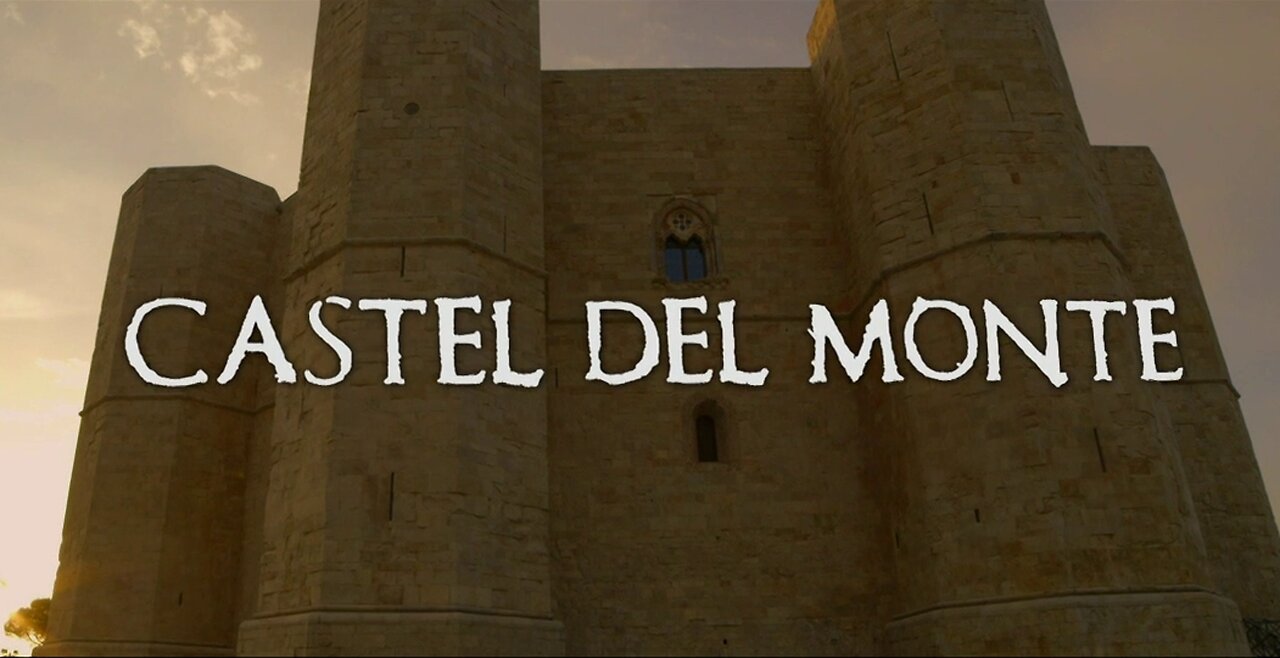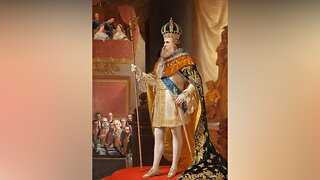Premium Only Content

Seven Wonders | Castel del Monte (Episode 4)
Episode 4: In this episode, the imposing Castel del Monte: perhaps the best known of the castles built in Apulia by Frederick II of Swabia.
Castel del Monte (Italian for "Castle of the Mountain"; Barese: Castìdde du Monte) is a 13th-century citadel and castle situated on a hill in Andria in the Apulia region of southeast Italy. It was built during the 1240s by King Frederick II, who had inherited the lands from his mother Constance of Sicily. In the 18th century, the castle's interior marbles and remaining furnishings were removed. It has neither a moat nor a drawbridge and some considered it never to have been intended as a defensive fortress. However, archaeological work has suggested that it originally had a curtain wall. When the castle was built, the region was famously fertile with a plentiful supply of water and lush vegetation.
The castle is famous for its bold octagonal plan, and classicizing details of the architecture. In 1996, Castel del Monte was named a World Heritage Site by UNESCO, which described it as "a unique masterpiece of medieval military architecture". Because of its relatively small size, it was once considered to be no more than a "hunting lodge", but scholars now believe it originally had a curtain wall and did serve as a citadel. Frederick II was responsible for the construction of many castles in Apulia, but Castel del Monte's geometric design was unique. The fortress is an octagonal prism with an octagonal tower at each corner. The towers were originally some 5 m (16 ft) higher than now, and they should perhaps include a third floor.
The octagonal plan is unusual in castle design. Historians have debated the purpose of the building and it has been suggested that it was intended as a hunting lodge. Another theory is that the octagon is an intermediate symbol between a square (representing the earth) and a circle (representing the sky). Occasionally used as a hunting lodge under Manfred of Sicily, the castle become a state prison under the latter's victor, Charles I of Anjou: here Manfred's sons Henry, Azzo and Enzo were kept as prisoner after 1266, as well as other Hohenstaufen supporters.
In the 18th century, the castle's marbles and other ornamentation were looted. Members of the House of Bourbon took the marble columns and window frames and reused them at their palace in Caserta. What remains now includes fragments of a knight and a reused Roman relief, while in the Provincial Gallery of Bari there is a head fragment and a cloaked, headless bust, sometimes interpreted as Frederick II. After having been abandoned for a considerable length of time, the castle was purchased in 1876 for the sum of 25,000 lire by the Italian State, which began the process of restoration in 1928. During the Allied occupation of WWII, the United States 15th Army Air Force headquartered a secret navigational aid station called Big Fence at the Castel.
Central to the plot of Umberto Eco's novel The Name of the Rose is an old fortress known as the 'Aedificium'. This was almost certainly inspired by Castel del Monte. It was also the set for the film Tale of Tales.
Episode 5: https://rumble.com/v497z90-seven-wonders-lecce-and-the-baroque-episode-5.html
-
 1:56:23
1:56:23
Adaneth - History&Politics
8 days agoSecrets of History | Pedro II - The Last Emperor of Brasil
40 -
 1:26:16
1:26:16
Man in America
1 day agoEXPOSED: Trump's COVERT War Against the European Banking Cartel w/ Tom Luongo
107K47 -
 1:45:48
1:45:48
Glenn Greenwald
14 hours agoGlenn Reacts to News of the Week; Plus: Audience Q&A | SYSTEM UPDATE #443
116K84 -
 11:05:38
11:05:38
Dr Disrespect
19 hours ago🔴LIVE - DR DISRESPECT - PUBG - 5 CHICKEN DINNERS CHALLENGE
237K21 -
 3:23:12
3:23:12
I_Came_With_Fire_Podcast
18 hours agoSHALL NOT BE INFRINGED| THE TYRANNY OF UNELECTED BUREAUCRATS | XI BOWS
56.6K9 -
 4:19:36
4:19:36
SynthTrax & DJ Cheezus Livestreams
20 hours agoFriday Night Synthwave 80s 90s Electronica and more DJ MIX Livestream THE GREAT EDO WARS OF 2067 Edition
91.7K10 -
 4:45:15
4:45:15
RalliedLIVE
10 hours ago $1.85 earnedWarzone Domination w/ Ral
65.1K1 -
 1:10:17
1:10:17
Sarah Westall
12 hours agoWorld Leaders Increasingly Display Panic Behavior as Economic Change Accelerates w/ Andy Schectman
95.7K18 -
 59:54
59:54
Motherland Casino
9 hours ago $2.14 earnedScar x Ayanna
38.9K7 -
 41:57
41:57
BonginoReport
14 hours agoProtecting Kids From WOKE Ideology in School (Ep. 35) - Nightly Scroll with Hayley Caronia -04/25/25
129K51